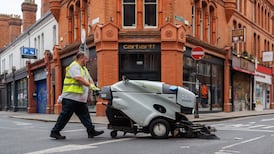Whatever else the investigators may find out about this tragic accident, the one thing already clear is that the weather was the main factor in what ultimately happened. It is also a sad fact that pilots involved in medevac or search-and-rescue missions sometimes are so dedicated to saving the people they are sent to rescue that they fail to pay sufficient attention to their own survival.
Stressing the weather factor may seem like stating the obvious, but people widely - and wrongly - believe the military has smart equipment that can do everything now. In fact, mankind has not invented anything yet to enable pilots to see through thick fog. Military helicopter pilots can see in the dark using night vision goggles, but not through dense fog.
When specially equipped airliners land at major international airports like London Heathrow in thick fog it's called "blind landing", because that is literally what it is. The pilots are not landing the aircraft, because pilots need to see to land.
The aeroplane is landing itself, guided by the radio beams of a high accuracy instrument landing system (ILS) and flown by a sophisticated autopilot linked to the aeroplane's ILS sensors.
A small airfield like Waterford's is not equipped with navigational aids accurate enough to enable the pilots to land there in virtually zero visibility. The pilots knew that if they had tried they could have crashed into any high structure such as the control tower or into trees on the airfield boundary.
With limited fuel left, they had to go looking for terrain which was as obstacle-free as possible, and where the fog might have been less bad. They chose the beach because beaches are normally obstacle-free.
Medevac and search-and-rescue flying is incredibly demanding. Not only does it frequently require the highest possible levels of flying skill, but psychologically the crew face great strain. If they are given a mission to save people from a storm-tossed ship, the helicopter has to face the storm just as much as the ship does. And imagine the stress for the crew if they find the ship in distress, see the terrified faces of the sailors, but must decide to fly off and leave them to drown, because the ship's thrashing mast would foul the helicopter's sling if a rescue were attempted. The alternative is to risk killing your own crew, in which case the ship's crew are also lost.
Yet that is the kind of decision faced on many missions. The psychological stress is such that medevac operators often tell the pilot nothing about the urgency of the mission on which he is sent. The pilot knows he would not have been called out if there was no urgency, so if he is told that he is going to the site of a motorway accident at which a small child is critically injured, all that will do is to make him take high risks to be quicker.
The point here is that this is the kind of task in which a pilot can get dangerously close to the mission that he's sent on. This can make him take risks at the site, or forget to check weather changes at his intended destination, or to watch his remaining fuel. At the end of an emotionally and physically demanding mission there is another "human factor" hurdle to jump: that of euphoria at lives saved from the jaws of death, or simply a dangerous relaxation of concentration on the way back to base.
There is no evidence at this point that these factors were involved in this case. But because they so frequently are factors in similar events all over the world, the investigators will be looking to see if this was another case of pilots who, in worsening weather, got too close to their job.
The Army's Dauphin is a good helicopter. Although a technical failure is always a possibility in all accidents, usually it is the nature of the task that the helicopter is being called upon to do which is the cause of the accident.
Helicopters are almost always given the difficult jobs, the ones that nothing else can do.
David Learmount is Operations and Safety Editor of Flight International









